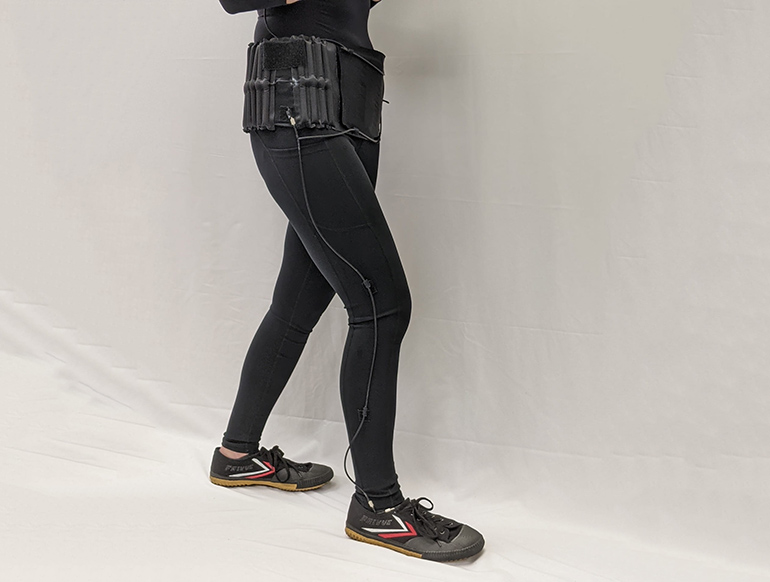Researchers at Rice University have developed a pneumatic assistive device for people with disabilities. The technology includes an air pump that is mounted in the wearer’s shoe, providing pneumatic power with each step. This power is stored in a wearable belt that includes an “arm” that can reach out and grip items when activated. The device may be very practical for people with arm weakness who struggle to lift objects.

The research team also developed a shirt with a bellows mechanism in the armpit that lets a wearer pick up an object that weighs 10 pounds. The researchers are exploring the possibility of using the compressed air mechanism to power other assistive and medical technologies, from leg compression technologies for deep vein thrombosis to gloves that help people with gripping objects.
Wearable assistive technologies have the potential to completely change the lives of disabled people, allowing them to perform activities that would otherwise have been impossible, increasing their independence and their quality of life. There are a large number of people who would benefit from such devices.
“Census statistics say there are about 25 million adults in the United States who find it difficult to lift 10 pounds with their arms,” said Anoop Rajappan, a researcher involved in the study. “That’s something we commonly do in our daily lives, picking up household objects or even a baby.”
However, many such devices require an electricity supply, meaning either a wired tether or a battery that the wearer must carry around. This latest technology does not need electrical power, deriving its energy from compressed air that is produced using a foot pump.
The textile pump resides within the shoe of the wearer, which compresses air into a belt worn around the waist with every step. The belt acts as a reservoir for the compressed air, which can be used to inflate and actuate a “gripper” that extends from the belt and grabs objects. The inexpensive garments cost less than $20 per unit, and the researchers used conventional textile techniques that are employed in the garment industry.
“The fabrication approach uses techniques that are already employed in the garment industry, things like cutting textile sheets and bonding them with heat and pressure,” said Daniel Preston, another of the study researchers. ‘We’re ready to think about translating our work towards products.’
The Rice team also have other plans for the basic pneumatic technology at the heart of the system. “We’re also thinking about devices like pneumatic actuators that apply therapeutic compression for things like deep vein thrombosis, blood clots in the legs,” said Rajappan . “Anything that requires air pressure can be powered by our system.”
See a video about the technology below.
Studies in Science Advances: A wearable textile-based pneumatic energy harvesting system for assistive robotics
Via: Rice University
